Welcome to our comprehensive guide on fly fishing tips and tricks. Whether you are a beginner or an experienced angler, we have put together a range of useful information to help you master the art of fly fishing and achieve success on the water. In this article, you’ll find essential advice on equipment selection, fly tying, casting techniques, reading the water, and much more, as well as answers to frequently asked questions. So, let’s dive in and discover everything you need to know to become a successful fly fisherman.
- Essential Fly Fishing Equipment
- Choosing the Right Fly
- Mastering Fly Casting Techniques
- Choosing the Right Fly
- Reading the Water
- Fly Fishing Techniques for Different Species
- Fly Fishing Etiquette and Conservation
- Fly Fishing Safety Tips
- Fly Tying Basics
- Tips for Fly Fishing Success in Various Conditions
- Frequently Asked Questions (FAQ)
Essential Fly Fishing Equipment
Fly fishing requires specific equipment to be successful. Here are the essentials you will need to get started:
| Item | Description |
|---|---|
| Fly Rod | A fly rod is a long, flexible rod used to cast the fly line. It comes in different sizes and weights that depend on the type of fish you intend to catch and the fishing conditions. |
| Fly Reel | A fly reel is a mechanical device used to store and retrieve the fly line. It comes in different sizes and weights and should match the weight of your fly rod. |
| Fly Line | A fly line is a specialized fishing line used in fly fishing. It is thicker and heavier than other fishing lines and comes in different types and weights, including floating, sinking, and sinking tip lines. |
| Leaders and Tippets | Leaders and tippets are tapered monofilament lines that are attached to the end of the fly line and the fly. They help to create a natural presentation of the fly and provide the necessary strength and invisibility. |
When choosing your equipment, consider the type of fish you’ll be targeting, the size of the water you’ll be fishing, and your personal preference. It’s also important to choose high-quality gear that will last longer and perform better.

Image source:
Choosing the Right Fly
One of the most important factors in successful fly fishing is choosing the right fly. Selecting the appropriate fly patterns requires an understanding of the water, the fish’s behavior, and the weather conditions. Here are some tips on choosing the right fly for your fishing trip:
Consider the Water Type
The water type plays a crucial role in determining the type of fly that will attract the fish’s attention. In stillwater fishing, dry flies are typically more effective since the fish are hunting on the surface. In contrast, fishing in a fast-moving river may require using nymphs or streamers as they sink quickly and imitate the movement of insects or small baitfish.
Understand Fish Behavior
Understanding the behavior patterns of the fish you are targeting is essential to selecting the right fly. Factors such as the time of day, water temperature, and weather conditions can all impact a fish’s feeding habits. In general, trout tend to feed more actively in the early morning and late evening, while bass are more active during warmer water temperatures. By observing the fish’s behavior, you can determine the type of fly and presentation that will be most effective.
Identify Fly Patterns
Fly patterns can be divided into three main categories: dry flies, nymphs, and streamers. Dry flies float on the water’s surface and imitate insects, while nymphs imitate aquatic insects and other prey that live below the surface of the water. Streamers imitate larger prey such as baitfish and leeches. Understanding these fly patterns and their uses is essential to choosing the right fly for your target species.
| Fly Pattern | Description | Best Used For |
|---|---|---|
| Dry Flies | Replicates floating insects on the water’s surface | Trout in stillwater fishing |
| Nymphs | Imitates aquatic insects and other prey that live below the surface of the water | Trout in river fishing |
| Streamers | Imitates larger prey such as baitfish and leeches | Bass and other predatory fish |
Choosing the right fly can make all the difference when it comes to a successful day on the water. Experiment with different patterns and presentations to see what works best in each situation. With a little practice and patience, you’ll be on your way to becoming a successful fly angler.
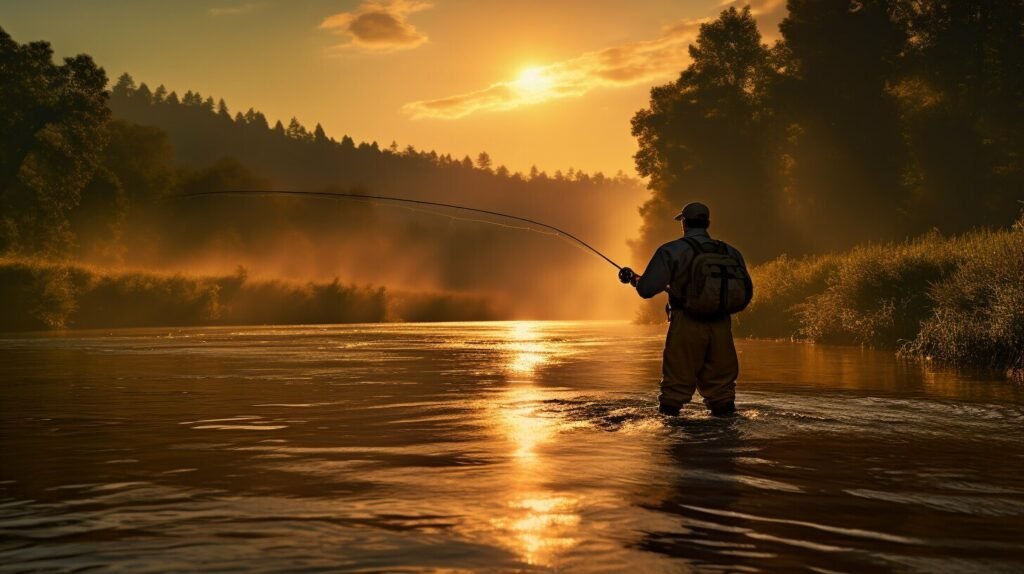
Mastering Fly Casting Techniques
One of the key aspects of successful fly fishing is mastering casting techniques. While it may seem daunting at first, with practice and patience, anyone can become a skilled caster. Here are some tips to help improve your casting:
The Overhead Cast
The overhead cast is the most common casting technique used in fly fishing. To perform an overhead cast:
- Start with your rod tip pointing towards the water.
- With a smooth motion, lift your rod up to the 10 o’clock position.
- Next, with a quick and forceful forward motion, bring your rod forward and stop abruptly when the rod tip is pointing towards the water.
- The line should unroll in front of you, with the fly landing gently on the water.
Remember to keep your elbow in and use your wrist to control the movement of the rod. Practice your timing and improve your power by using the force of your forearm and wrist.
The Roll Cast
The roll cast is a useful casting technique to use when you have limited space behind you, such as when fishing in tight quarters or near obstacles. To perform a roll cast:
- Start with your rod tip low, close to the water.
- Draw a small arc with your rod tip as you lift the line off the water.
- Sweep the rod back towards you, forming a D-loop with the line behind you.
- Next, with a quick and forceful forward motion, bring your rod forward, unrolling the line in front of you.
- Finish by keeping the rod low to the water to avoid excess movement.
Remember to keep your wrist stiff and use the movement of your arm to create the power needed for the cast. With practice, you can master both the overhead and roll casts, making you a more versatile fly angler.

“The difference between a good cast and a bad cast is often about four feet of fly line.” – Lefty Kreh
Choosing the Right Fly
Choosing the right fly is essential for a successful fly fishing trip. Different fly patterns are designed to mimic specific insects or baitfish and can vary in size, color, and shape. Here is a breakdown of the most common fly patterns:
| Fly Pattern | Description |
|---|---|
| Dry Flies | Designed to imitate adult insects floating on the surface of the water. These are typically smaller and lighter in color. |
| Nymphs | Designed to imitate immature insects that are underwater. These are typically larger and darker in color than dry flies. |
| Streamers | Designed to imitate baitfish, leeches, or other underwater creatures. These are typically larger and have more movement than dry flies or nymphs. |
When selecting a fly, it is important to consider the type of water, weather conditions, and time of year. For example, if you are fishing in fast-moving water, a heavier nymph or streamer may be more effective. Alternatively, if you are fishing in calm water, a lighter dry fly may be more successful.
It is also a good idea to bring a variety of fly patterns in different sizes and colors. This will allow you to switch up your approach if one fly is not producing any bites.
Remember, fly fishing is all about presenting your fly in a way that looks natural to the fish. Choosing the right fly pattern is a crucial step in achieving that goal.
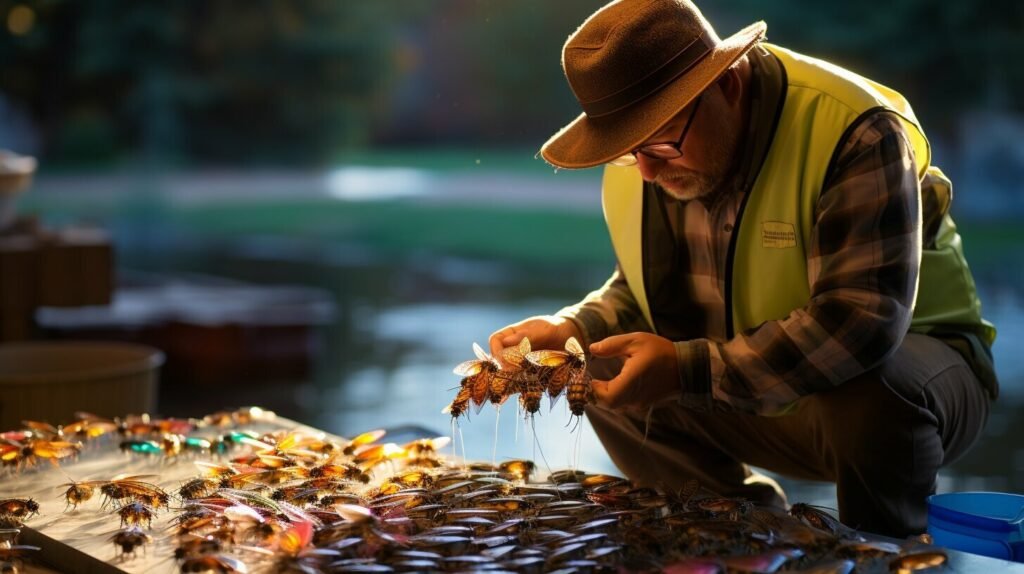
Reading the Water
One of the most important aspects of successful fly fishing is understanding the behavior of the fish and knowing where they are likely to be found. This requires an understanding of how water moves and changes in different types of environments, as well as the types of habitats that different species prefer.
Identifying Fish Holding Areas
To find where fish are likely to be holding, look for areas where there is a drop-off or change in structure. Often, fish will hold near the edge of deep pools or undercuts in the bank, where they can find cover and easy access to food. Look for areas where the water is moving slower than the surrounding area, such as behind rocks or in the slack water behind a riffle.
Another good indicator of where fish are holding is the presence of aquatic vegetation or structure. Plants and logs provide both cover and food sources for fish. Be sure to approach these areas quietly and with caution, as fish are easily spooked.
| Habitat Type | Preferred Species |
|---|---|
| Rivers and Streams | Trout, Salmon, Steelhead |
| Ponds and Lakes | Bass, Panfish, Trout |
| Saltwater Flats | Bonefish, Permit, Tarpon |
Fishing Different Water Types
Each type of water has its own unique characteristics, and successful anglers will need to adapt their tactics accordingly. In stillwater, a slow and steady retrieve is often effective, while in rivers and streams, a faster retrieve may be necessary to keep the fly moving with the current.
One useful technique for fishing rivers and streams is to work the seams between fast and slow moving water. This can be done by casting upstream and letting the fly drift naturally into the holding area. Similarly, in stillwater, fishing around drop-offs or weed beds can be effective as they provide cover for fish and a change in structure for them to use as ambush points.
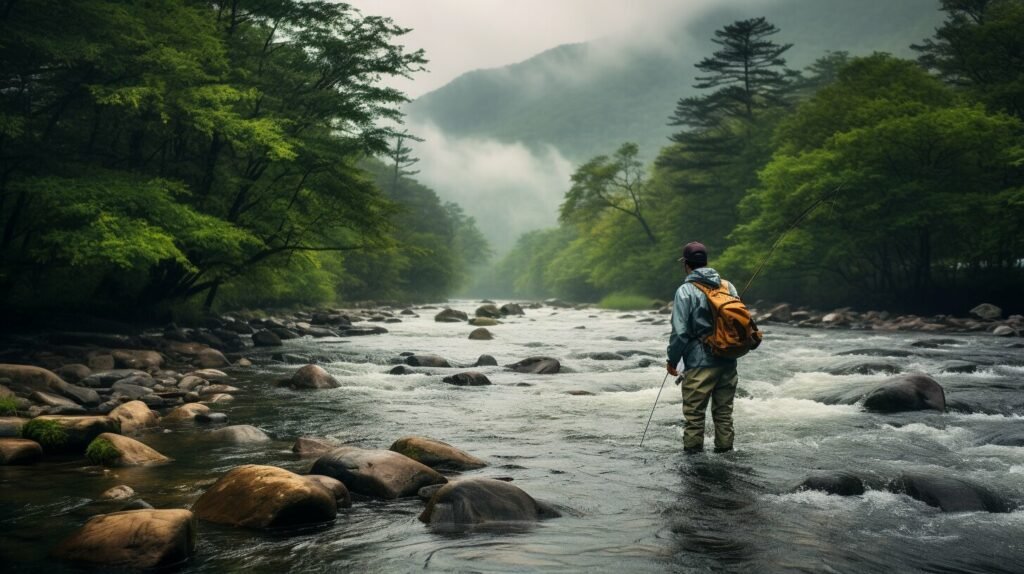
Being able to read the water and identify fish holding areas is essential for successful fly fishing. By understanding how water moves and changes, and where different species prefer to hold, anglers can increase their chances of catching fish. Remember to approach these areas quietly and with caution, and to adapt your tactics to the specific water type you are fishing.
Fly Fishing Techniques for Different Species
Fly fishing is not one-size-fits-all, and tailoring your approach to the specific species you’re after can make all the difference. Here are some tips for achieving success when targeting different types of fish.
Fly Fishing for Trout
Trout are a popular target for fly fishers, and for good reason. They are found in a variety of environments, including rivers, streams, and lakes. When targeting trout, it’s important to consider the type of water you’re fishing in. In smaller streams, dry flies and nymphs are often the most effective. In larger rivers and lakes, streamers and larger nymphs may be more successful.
Trout are also known for their skittishness, so stealth is key. Avoid making unnecessary movements or noise, and try not to cast your line directly over the fish. Instead, aim for spots where the fish are likely to be holding, such as behind rocks or in slower-moving water.

Fly Fishing for Bass
Bass are another popular target for fly fishers, and they can be found in both freshwater and saltwater environments. They are often caught using streamers, poppers, or topwater flies. Bass tend to be more aggressive than trout, so you can often get away with a less stealthy approach. However, it’s still important to avoid spooking them with sudden movements or loud noises.
When fishing for bass in freshwater, look for areas with structure, such as weed beds, logs, or drop-offs. In saltwater, try fishing around jetties, docks, or other man-made structures.
Fly Fishing for Salmon and Steelhead
Salmon and steelhead are prized catches for many fly fishers. They are typically found in larger rivers and are often caught using large streamers or egg patterns. These fish can be strong and fast, so be sure to use a rod and line that can handle their size and power.
When targeting salmon or steelhead, look for areas where they are likely to be holding, such as deep pools or runs. These fish often move upstream to spawn, so timing your trip to coincide with their migration can increase your chances of success.
“Fly fishing is an art that requires patience, practice, and attention to detail. By tailoring your approach to the specific species you’re after, you can increase your chances of success and make your time on the water more enjoyable.”
Fly Fishing Etiquette and Conservation
As fly fishers, it is our responsibility to respect the environment and preserve the sport for future generations. Practicing good etiquette and conservation practices helps to ensure that we can continue to enjoy fly fishing for years to come.
Fly Fishing Etiquette
One of the essential elements of fly fishing is respecting other anglers. Here are a few pointers:
- Always ask for permission before fishing on private property.
- Give other anglers plenty of space. Avoid casting over their lines, and never cut in front of someone else who is fishing a spot.
- Be considerate of others when wading. Avoid splashing or disturbing the water more than necessary.
Remember: Good manners are essential to maintaining positive relationships with other anglers and property owners.
Conservation Practices
Conservation practices are crucial to preserving fish populations and their habitats. Here are a few tips for helping to ensure the sustainability of fly fishing:
- Practice catch and release, especially for sensitive species or in areas where fish populations are struggling. Use barbless hooks to minimize damage to the fish.
- Minimize disturbance to fish habitats. Avoid trampling vegetation or disturbing the riverbed.
- Dispose of waste properly. Pack out all garbage, including used fishing line, leaders, and tippets.
By following proper fly fishing etiquette and adopting conservation practices, we can all play a part in preserving the sport we love. As the saying goes, “take only memories, leave only footprints.”
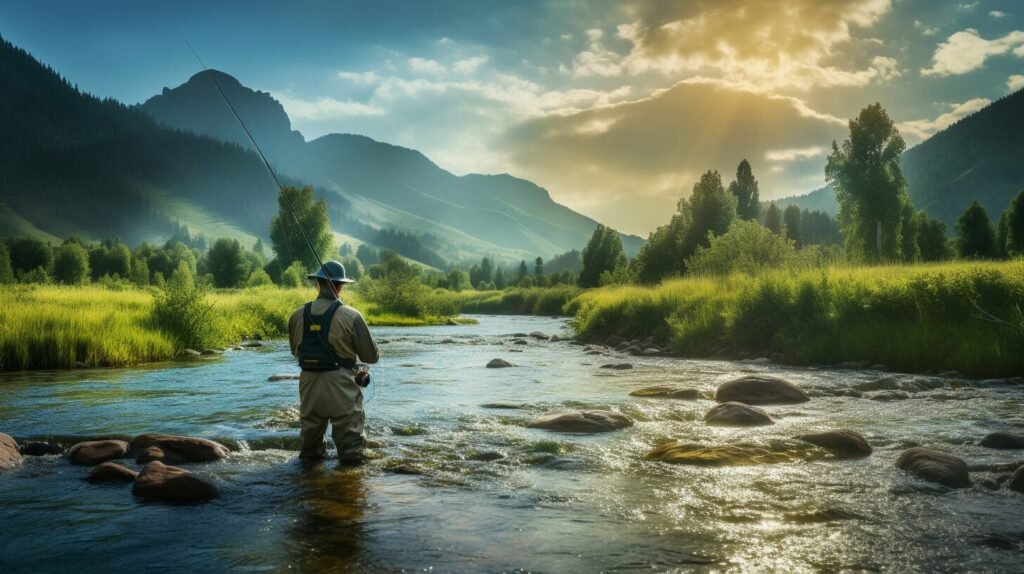
Fly Fishing Safety Tips
Fly fishing is a thrilling and rewarding sport, but it’s important to put safety first. Here are some essential safety tips to keep in mind:
1. Be mindful of wading safety
Wading is a common part of fly fishing, but it can also be dangerous. Always wear waders that fit properly and have good traction. Avoid wearing felt-soled waders, which can spread invasive species. Be careful when moving around in the water and always maintain good balance.
2. Stay aware of weather conditions
The weather can change quickly when you’re out on the water, so it’s important to be prepared. Check the forecast before you head out and keep an eye on the sky while you’re fishing. If a storm is approaching, seek shelter immediately.
3. Protect yourself from insects
Fly fishing often involves spending time in areas where insects are abundant. Unfortunately, some of these insects can carry diseases like Lyme disease and West Nile virus. Protect yourself by wearing long sleeves and pants, using insect repellent, and checking yourself thoroughly for ticks after you’re done fishing.
4. Know your limits
It’s important to know your own limits when it comes to fly fishing. Don’t try to fish in areas that are too treacherous or challenging for your skill level. Be honest with yourself about your abilities and don’t take unnecessary risks.
5. Respect the environment
As fly anglers, it’s our responsibility to protect the environment we fish in. Always pack out your trash and respect wildlife and their habitats. Practice catch-and-release fishing to help preserve fish populations and maintain healthy ecosystems.
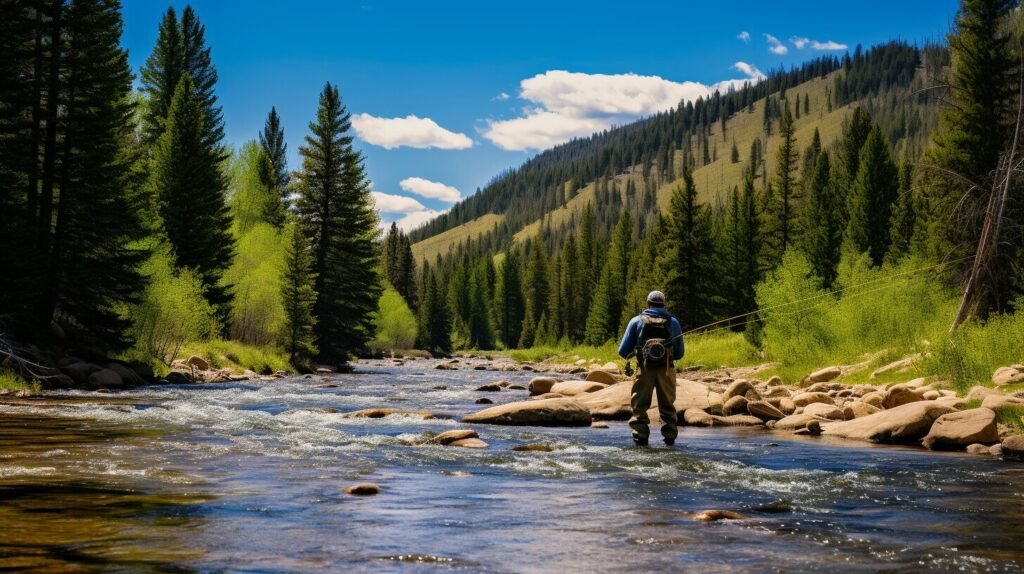
“Safety should always be a top priority when fly fishing. By following these tips, you can enjoy the sport while still staying safe.”
Fly Tying Basics
Fly tying is the essential skill of creating your own artificial flies for fly fishing. Crafting flies is much more than just tying feathers and fur onto hooks. It is a precise and delicate skill that delivers a unique experience for every fly angler. Here’s what you need to know to get started with fly tying:
Materials
Before you start tying flies, it is essential to have the right materials at hand. Some of the essential fly tying materials include:
- Hooks (various sizes and shapes)
- Thread (for securing materials to the hook)
- Feathers (for wings and tails)
- Hair (for bodies and wings)
- Tinsel and wire (for adding flash or weight to flies)
As you progress in your fly tying skills, you may find new materials to add to your collection.
Tools
Having the right tools is essential for successful fly tying. Some of the essential fly tying tools include:
- Vise (for holding the hook securely)
- Bobbin (for holding and dispensing thread)
- Scissors (for cutting materials)
- Hackle pliers (for holding feathers while wrapping them around the hook)
- Whip finishing tool (for finishing off a fly)
These tools can be purchased as a kit or individually.
Techniques
Once you have the materials and tools, it’s time to start tying flies. Here are some basic techniques to get started:
- Wrapping thread around the hook to secure materials and create a foundation for the fly.
- Adding materials such as feathers and hair to the hook to create the fly.
- Whip finishing the fly to secure the thread and complete the fly.
There are many techniques that you can learn as you progress in your fly tying journey.

“Fly tying is a beautiful combination of art and science. It is amazing how a few different feathers, furs, and threads can come together to create an artificial fly that fools fish.”
With the right materials, tools, and techniques, you can create your own unique flies that will help you catch fish. Happy tying!
Tips for Fly Fishing Success in Various Conditions
Fly fishing success depends on many factors, including the fishing conditions. Whether you are fishing in stillwater, rivers, or saltwater, there are tips and tricks you can use to improve your chances of success.
Fishing in Stillwater
When fishing in stillwater such as lakes, it’s essential to understand the behavior of the fish. Trout, for example, often cruise the shorelines in search of food. When fishing from a boat, anchor close to the shore and cast towards the bank. Alternatively, use a float tube or pontoon boat to reach areas inaccessible from the shore. Look for drop-offs and underwater structures, as fish tend to hold in these areas.
When selecting flies for stillwater fishing, try to imitate the natural food sources in the area. Chironomids, leeches, and scuds are common stillwater insects that fish feed on.
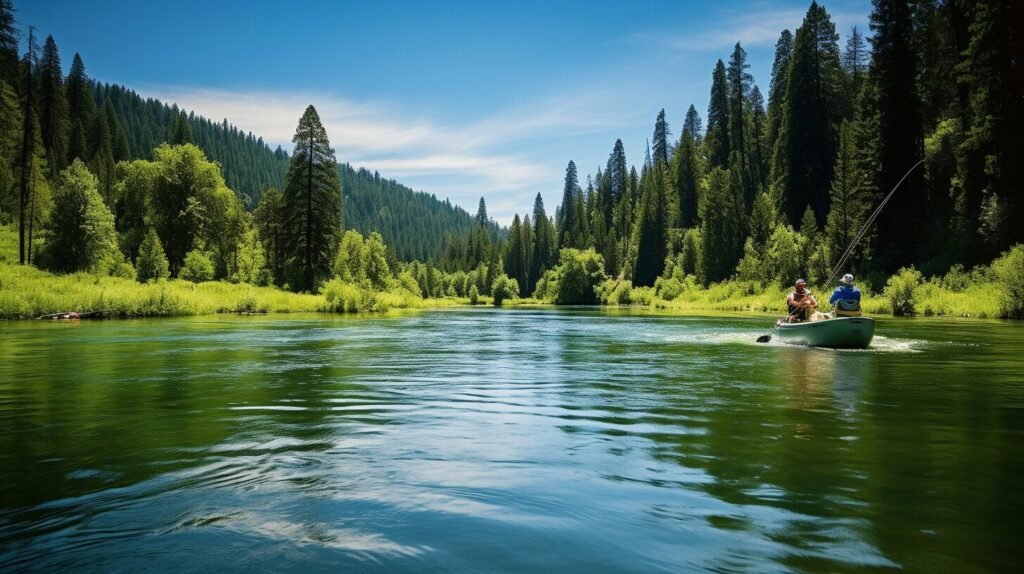
Fishing in Rivers
River fishing requires an understanding of the water’s currents and structure. Fish tend to hold in areas with slower currents, such as behind rocks, logs, or other obstructions. When possible, fish upstream to present your fly naturally. Always wade carefully and be aware of the current’s strength and depth.
In terms of fly selection, consider what insects are naturally present in the river. Caddis, mayflies, and stoneflies are common river bugs that fish feed on. Try to match the hatch with your fly selection.
Saltwater Fly Fishing
Saltwater fly fishing presents unique challenges due to the size and power of the fish. Be prepared to cast large flies and heavy lines to target species such as tarpon or permit. When fishing from a boat, look for signs of feeding fish such as birds diving or fish breaking the surface.
When selecting flies for saltwater fishing, think big and flashy. Clouser minnows, deceivers, and poppers are effective saltwater patterns. Consider the color of your fly as well; bright colors tend to work best in murky water.

By understanding the unique demands of each fishing condition, you can increase your chances of success on the water. Remember to adapt your strategy to fit the conditions, experiment with different flies and techniques, and be patient. Good luck!
Frequently Asked Questions (FAQ)
As a beginner or even an experienced fly fisher, you may have some questions about fly fishing. Here, we have compiled some of the most commonly asked questions and provided answers to help you hone your skills and become a more successful angler.
What should I wear for fly fishing?
It is important to wear clothing that is comfortable and appropriate for the weather conditions. In colder weather, layers are essential. You should also wear sturdy wading boots with good traction to avoid slips and falls.
What is the best time of day to go fly fishing?
The best time of day to go fly fishing depends on the species of fish you are targeting and the location you are fishing in. Typically, fish are more active in the early morning and late afternoon. However, this can vary depending on factors such as time of year and weather conditions.
How do I know which fly to use?
The type of fly you should use depends on the species of fish you are targeting, the time of year, and the conditions of the water you are fishing in. Do some research and choose a fly that is known to be successful in those conditions. You can also ask for advice from experienced fly fishers or local guides.
What is the difference between a dry fly and a wet fly?
A dry fly floats on the surface of the water, while a wet fly sinks below the surface. Dry flies are often used when fish are actively feeding on insects on the surface, while wet flies are used to imitate underwater insects or baitfish.
What is catch and release?
Catch and release is a practice in which an angler catches a fish and releases it back into the water without keeping it. This practice is intended to preserve the fish population and is often mandatory in certain areas.
How do I cast a fly rod?
Casting a fly rod requires practice and technique. Begin by mastering the basic overhead cast, then progress to other casts such as the roll cast and the double haul. Watch instructional videos or consider taking a casting lesson from a professional to improve your skills.
What is the best way to approach a river or stream for fly fishing?
When approaching a river or stream, be careful not to spook the fish. Move slowly and avoid making sudden movements or noise. Try to approach from downstream so that the current will carry your scent away from the fish.
What should I do if I hook a fish?
When you feel a fish bite, set the hook by quickly pulling back on the rod. Once you have hooked the fish, play it carefully and avoid putting too much pressure on the line. If you plan on releasing the fish, do so carefully and quickly to minimize harm.
By following these tips and guidelines, you can improve your skills and become a more successful fly fisher. Remember to always respect the environment and fellow anglers, and practice proper catch and release techniques to help preserve our precious waterways and fish populations.





















